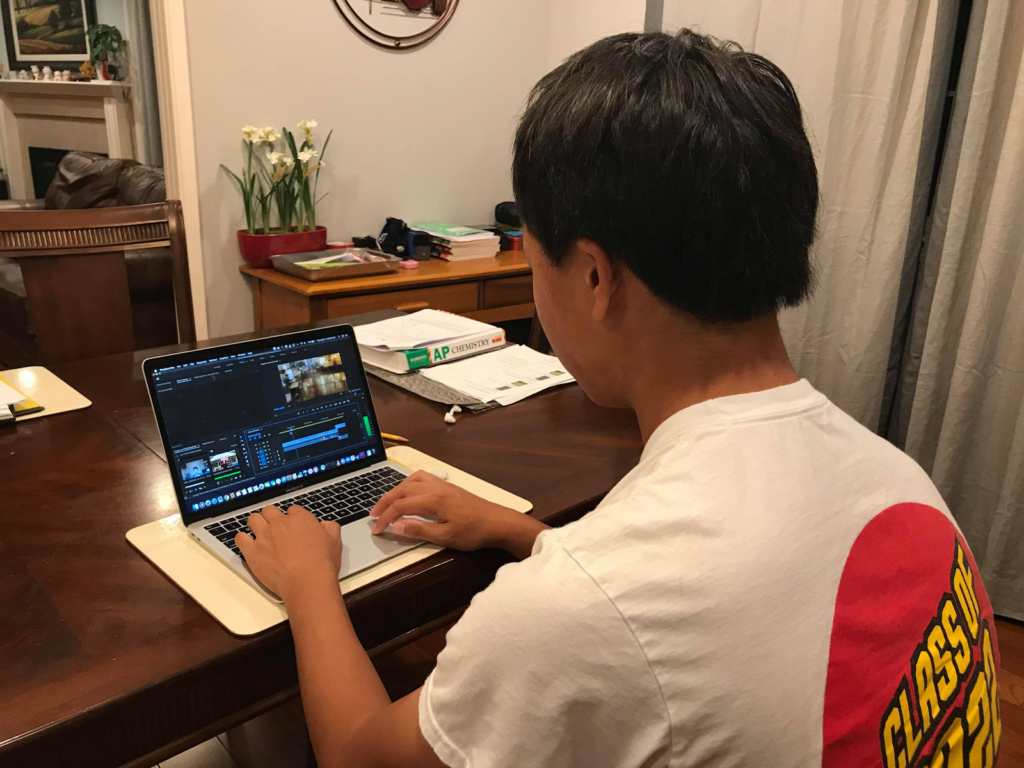On a quiet Saturday night, SHSTV associate producer junior Anthony Zheng sits in front of his computer at home, painstakingly editing clips of video and audio together. As he makes his final edit, he breathes a sigh of relief, having finally finished the broadcast for the week.
For highly collaborative classes like SHSTV that rely heavily on communication, the shift to virtual learning has caused many adjustments to the regular class organization.
“SHSTV is operating a little differently because a huge part of our class is the weekly broadcast, where we go in the studio to film,” SHSTV producer Nolan Chen said. “There’s a whole anchor set and technical room, which basically makes SHSTV unique from a regular film class.”
Amid all the production changes, SHSTV also has a new adviser, Alex Hemmerich, who took over the role from Joel Tarbox. Tarbox had advised the group for the past five years.
Since the start of the school year, the release date for SHSTV has changed from the usual Thursday to Monday. This allows groups of four students to plan, film and edit their stories from the Tuesday they are assigned to Saturday, when editors take the videos and put them together. The completed broadcast is then sent to Hemmerich, who uploads them to the broadcast’s YouTube channel.
Although in-studio broadcasts have been canceled, positions such as the anchor and editor remain. To decide who fills these positions, anchors are assigned on a voluntary basis and editors rotate according to a schedule.
The change to online learning has brought its fair share of challenges, one of the biggest being communication.
“It’s a lot harder to hold people accountable and communicate because not everyone is responsive on their phones, and there’s really no way to make sure people do their work on time,” Chen said.
Producers and associate producers, who oversee the team, have found the new workload to be challenging, especially as the class size increased from 14 students last year to 22 students this year. Not only has the amount of footage that needs reviewing increased, but the amount of time spent managing people has increased as well.
The shift to working from home has also resulted in the loss of the collaborative classroom environment for students. Aside from losing the ability to broadcast and film in the state-of-the-art studio on campus, students miss the ease of collaborating, sharing ideas and working together to write and record their stories. At home, many of these collaborative aspects are now gone.
“Being in the classroom is a lot more beneficial towards things like productivity, and it's a lot more social and fun,” Zheng said.
Despite the difficulties online learning has brought to the SHSTV team, they have continued to move forward and produce weekly videos for Saratoga students.
“Hopefully we can still do our best for SHSTV at home,” Zheng said. “Our goal is still to provide our audience with the most informative and highest-quality broadcast we can make each week so that they know what is going on around the school — even if they are not physically there.”


























